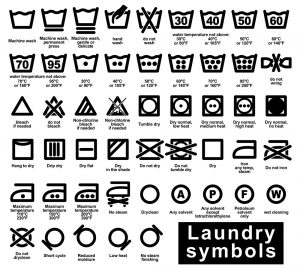
by Samantha Kennedy | May 11, 2020
We like to feel as if we are always in control of our lives, especially during a crisis. Being in control provides us with feelings of confidence and strength, as if nothing could ever go wrong. However, sometimes we are not in control of our lives. Sometimes our emotions can run away with us and in times of confusion and uncertainty, those emotions can leave us feeling scared and anxious.
Right now, for many of us, our world has tilted a bit off its axis. We feel as if life is a little precarious, as if the control we value has been threatened. We want to protect ourselves and our families from something we may not fully understand, and this can leave us feeling a bit helpless. While this can be a scary way to feel, let me just say this: It is okay to feel this way, especially during times of challenge and uncertainty.
The key to keeping steady on rough emotional seas is to seek out feelings of calm. Seek out activities that can help distract from the anxious feelings, even for a few minutes. Soothing activities can vary depending on the person, so it is important to find which activities work best. Here are some good examples:

A good book and a soothing cup of tea can provide an oasis of calm in a desert of uncertainty. (Photo source: Samantha Kennedy)
Reading. Books and stories can be a great escape, allowing us to get lost in a world where there are no problems or where, at the very least, the problems are not ours to worry about. When I am feeling anxious, I like to dive into a good mystery or thriller where my mind can become occupied with an intricate plot and I can break the cycle of worried thoughts swirling inside my head. Reading stories with children can help everyone take a break from stress as well.
Creating. Remember those adult coloring books we all bought years ago? Pull those out of the drawer and blow the dust off them. Those items were touted as good stress busters for a reason. Concentrating on coloring in a picture or a pattern can help calm the mind and alleviate stressful emotions. Other creative outlets work just as well, such as drawing, journaling, or playing the guitar. I enjoy practicing my hand lettering when I am feeling stressed.
Exercising. Moving our bodies infuses our muscles and brain with oxygen and releases those feel-good chemicals known as endorphins, which produce feelings of relaxation and euphoria. Exercise strengthens our bodies and boosts our emotions. The exercise does not have to be strenuous to be effective. Low-impact exercise such as yoga and tai chi can have as much of a positive effect on the mind and body as more intense exercise such as running and weightlifting.
Meditating. Meditation is often thought of as something only practiced by spiritual folks on mountaintops in Tibet. But this is an unfair stereotype. Meditation can be practiced by anyone, even children. At its most basic, it is simply a way to center and calm our mind by focusing on our breath as it moves in and out of our body. By doing this, we can simply acknowledge and quickly dismiss all extraneous thoughts, including anxious and stressful ones, thereby not allowing them to take hold. Effective meditation takes practice, but it does not have to take a long time. Even a short 5-minute meditation can help us find calm in a sea of chaos.
Finding ways to achieve calm during confusing times can help us feel more in control of our lives and can reduce feeling of stress and anxiety. For more suggestions on how to cope with stress, please read the UF/IFAS fact sheet Stress Management: Ways to Cope.
Extension classes are open to everyone regardless of race, creed, color, religion, age, disability, sex, sexual orientation, marital status, national origin, political opinions or affiliations.

by Samantha Kennedy | Mar 19, 2020

The deadline for filing your federal income tax return is April 15, 2020. (Photo source: IRS.gov)
The IRS has identified a new version of a phishing email scam targeting tax professionals. The fake email states the preparer’s EFIN has been put on a temporarily hold and warns the EFIN will be suspended unless the preparers open an embedded document and confirm or deny that they submitted the Form 1040. The embedded “1040” document likely contains malware.
The IRS reminds all tax professionals that they are targets of cybercriminals seeking to steal client data or the practitioners’ identities. Thieves use many variations of phishing emails such as this. The fake emails are characterized by an urgent message (your EFIN will be suspended) and try to entice recipients to open a link or attachment. The IRS urges all tax professionals to be on alert and take security steps to protect their clients and their businesses. Review Publication 4557, Safeguarding Taxpayer Data, for how to be safer.
Some simple steps include:
- Using the multi-factor authentication option offered by tax software to protect accounts from unauthorized access.
- Use strong password protections on all devices.
- Never open suspicious emails, links and attachments may carry malware.
- Use strong security software and keep it updated.
For more information, please visit https://www.irs.gov/.

by Samantha Kennedy | Mar 3, 2020
I recently bought some new shirts and last night, before washing them for the first time, I took a peek at their care instructions. I always do this prior to laundering anything new so I do not do anything that can harm my new duds. Proper laundry care is a must!
This is what one of the labels looked like:

Clothing care labels provide instructions for the proper care of your clothes to help you keep them looking their best for as long as possible. (Photo source: Samantha Kennedy, UF/IFAS Extension)
As I looked at all the labels, I was reminded once again that doing the laundry can be more complicated than simply throwing clothes in the washing machine, adding detergent, turning on the machine, and walking away. (I learned this lesson the hard way after I ruined a brand new blouse in the washing machine when it was supposed to be dry cleaned only.)
Care labels contain both written and symbolic instructions. Sure, I can read the written instructions and am fairly good at following directions, but what the heck do all those symbols mean? So I decided to look them up. After all, I did not study hieroglyphics and I wanted to be sure I treated my new clothes right.
Turns out, there are a LOT of laundry care symbols. And if you are anything like me, I know what very few of them actually mean. With that in mind, here is a comprehensive chart of the symbols you may find on your clothing care labels:

These laundry care symbols are standardized across the United States. and are required to be added to clothing care labels by the Federal Trade Commission, as appropriate. (Photo source: Miami University)
(Ctrl + click on the chart to open a larger version of it in a new tab.)
The Federal Trade Commission (FTC) actually regulates the use of these symbols in order to ensure standardization across the clothing industry. Certain types of apparel are excluded from having to use these symbols, such as hats, shoes, gloves, handkerchiefs, suspenders, neckties, and belts.
According to the FTC, all care labels must include instructions for washing and/or dry cleaning a particular item. There are five elements of washing:
- Washing by hand or by machine
- Bleaching
- Drying
- Ironing
- Other warnings (e.g. wash with like colors, wash separately, etc.)
In the sample label above (click here for a larger version), the symbols, from left to right, stand for machine wash below 80 degrees F (30 degrees C), do not bleach, tumble dry low heat, iron on low temperature, and do not dry clean.
I know it seems like the laundry is never done, and who has the time to follow all the specific care instructions, right? Believe me, I understand. And it is not realistic to wash every piece of clothing according to its specific instructions. However, taking the time to look at the care labels and familiarizing yourself with the most common symbols can help you avoid ruining perfect good clothes by doing something that can damage the fabric.
For a downloadable laundry care symbols chart, here is a nice one from the University of Tennessee Extension Service.
Extension classes are open to everyone regardless of race, creed, color, religion, age, disability, sex, sexual orientation, marital status, national origin, political opinions or affiliations.

by Samantha Kennedy | Jan 13, 2020

A delicious cup of hot tea is a great way to start the day and can provide a daily dose of health-promoting antioxidants.
(Photo source: Samantha Kennedy)
For me, there’s nothing better than a hot cup of tea on a chilly morning – or any morning, really. The rich flavor and fragrant steam work together to perk me up and help me get ready to take on the day. And in the evening, a nice, warm cup of tea can also help me relax before settling down to sleep. The key is finding the right kind of tea for the task.
Types of Tea
There are five major types of tea: green, black, white, red, and herbal. All non-herbal teas are produced from the leaves of the warm-weather evergreen tea plant, Camellia sinensis. The degree of processing or oxidation of the leaves determines which type of tea is produced.
Green tea is very minimally processed and the leaves are not oxidized, which results in its light green color and delicate taste. Green tea is very low in caffeine. Green tea is very popular in Asian cultures, but has gained increased popularity around the world.
Black tea has a very rich flavor and the highest caffeine levels of all types of tea due to the long processing time. The leaves are fully oxidized, resulting in the rich amber color and rich flavor. Some of the most popular and common types of black tea are Early Grey, English Breakfast, and Darjeeling.
Red tea is oxidized for less time than black tea, resulting in a milder flavor and lighter color. The flavor intensity and caffeine levels of red tea fall somewhere between green and black tea. The most common type of red tea is Oolong, which is very popular in Asia.
White tea is produced from young tea leaves and unopened buds. The resulting brew has a velvety, delicate flavor and very light, “white” color. Since it is so minimally processed, it has very little caffeine.
Herbal tea is not produced from the leaves of the tea plant. Instead, herbal teas are created through a combination of herbs and other plants, often utilizing the leaves, stems, and roots. Herbal tea does not have caffeine and is often used medicinally to treat a variety of ailments.
Potential Health Benefits
The health benefits of tea, especially green tea, have long been touted. The fermentation process involved in green tea production increases the levels of a type of antioxidants called polyphenols, which can help reduce cell damage caused by the byproducts of regular cell production in the body.
According to two Harvard School of Public Health studies, those who drank tea regularly showed a decreased risk of developing Type 2 diabetes compared to non-tea drinkers. The substances in tea, such as polyphenols, have also been linked to lower risk of cardiovascular disease, cancer, and stroke and have been shown to help lower blood pressure and cholesterol.
One note of caution: Some chemicals in tea are known to bind to iron, thereby decreasing its absorption in the body. Those who suffer from iron-deficiency anemia may want to consult a physician before increasing their tea consumption.
Tea drinking is not a cure-all. However, drinking tea as part of an overall healthy diet may provide added health benefits that can help promote healthy cells and blood vessels.
So take the time to smell (and sip and savor) the tea while toasting to better health. Happy brewing!
Additional Resources:
Health benefits linked to drinking tea (Harvard Medical School)
Tea: A cup of good health? (Harvard Medical School)
Take Time for Tea: For Health and Well-being (North Dakota State Extension)
Extension classes are open to everyone regardless of race, creed, color, religion, age, disability, sex, sexual orientation, marital status, national origin, political opinions or affiliations.

by Samantha Kennedy | Nov 7, 2019
Now that it is finally starting to feel like autumn here in north Florida, I have begun to see more and more fall-themed decorations. While the leaves may not change color as much as they do farther north, we do have easy access to another autumn staple: pumpkins.
Pumpkins can be grown in Florida. They are part of the cucurbit family of vegetables that includes other winter and summer squashes such as acorn, butternut, lemon, and zucchini. The four species of pumpkins include pepo, moschata, mixta, and maxima. They have a coarse, strongly flavored flesh and rinds whose hardness falls between that of winter (hard) and summer (soft) squashes.

Pumpkins are an autumn staple, providing not just festive decorations, but also nutritious additions to meals and desserts. (Photo source: Amy Stuart, UF/IFAS)
The three major categories of pumpkins are carving pumpkins, pie pumpkins, and ornamental pumpkins. Each type has its own unique characteristics. Carving pumpkins are large and have smooth, orange, and slightly ribbed skin. Pie pumpkins are smaller, have a sweeter taste, and bright, firm flesh. Ornamental pumpkins are tiny, about 3-4 inches in diameter, and can be orange, white, or variegated.
Pumpkins, like tomatoes, are botanically fruits, but are commercially considered vegetables. While their rinds are generally not edible, both their flesh and seeds can be eaten. Pumpkin can be canned, pureed, roasted, and made into soups, stews, and, of course, pies. Pumpkin seeds are most commonly roasted and eaten on their own as a snack or added to salads and other dishes for a bit of delicious crunch.
As a food source, pumpkins are very nutritious. They are low in fat, calories, sugar, and sodium. A single serving of pumpkin contains 10% of the daily value of potassium and 3 grams of fiber, both of which are vital to good health. Pumpkin also contains a variety of other beneficial nutrients such as vitamin C, calcium, and iron. However, pumpkin is a vitamin A powerhouse. One serving contains 250% of the daily value of this vitamin, which helps promote healthy eyes, skin, and bones. In fact, the beta carotene in pumpkins, which our bodies convert to vitamin A, is what gives pumpkins their vibrant orange color.
According to the University of Florida IFAS, most pumpkin varieties need around four months to reach maturity. To be ready for Halloween, pumpkins should be planted no later than early July. Spring pumpkins planted in March or April can be stored for use in October and November if stored properly in a cool, dry place.
When carving pumpkins, be sure to use the proper tools. Remove the seeds and pulp, and save the seeds for roasting and/or planting. When preparing pumpkins for canning, use smaller sugar or pie pumpkins. Cut them into cubes and do not mash or puree them. When making pumpkin pie, choose the smaller, sweeter pumpkins for the best flavor. Commercially canned pumpkin also can be used to make pumpkin pie.
One final note: do not confuse gourds and pumpkins. While, technically, all pumpkins can be considered gourds, not all gourds are edible. What we think of as gourds are usually the hard, bumpy things with the hollow center that are commonly found in fall decorations. While they are part of the same cucurbit family, they are primarily grown for ornamentation, utensils, and general interest.
Nothing says autumn like a few festive pumpkins. Whether used for a scary Halloween jack-o’-lantern, as a centerpiece for fall decorations, or as an ingredient in a delicious fall dessert, pumpkins are definitely the stars of autumn.
For more information about pumpkins, please call Samantha Kennedy, Family and Consumer Sciences agent, at 850.926.3931.
Additional Resources:
Florida Pumpkins – UF/IFAS Extension
Perfectly Pumpkin Recipe Collection – University of Nebraska – Lincoln Extension
Pumpkin carving: The history of the jack-o’-lantern – Michigan State University Extension
Extension classes are open to everyone regardless of race, creed, color, religion, age, disability, sex, sexual orientation, marital status, national origin, political opinions or affiliations.











